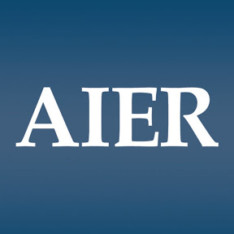Policy
Monetary
The Fed provided no new signals on policy firming in July, reducing the likelihood of a September rate liftoff.
The policy-making Federal Open Market Committee (FOMC) offered no clear hints on the timing of an initial interest rate increase in a statement following its July meeting. However, the absence of new guidance actually reveals information, and the chance of a September rate hike declined.
Fed chairwoman Janet Yellen is a big advocate of policy transparency and forward guidance. If the FOMC was headed for a September move, it would have given some signal at the preceding FOMC meeting in July. But the committee provided no new signs of its intentions. Yellen only said that the Fed remained on track to raise rates later this year. It is possible that the central bank will offer a rate plan at the September FOMC meeting. Two more meetings are scheduled for this year, in October and December, and the Fed could take action at either one.
Several developments in the economy may prompt a rate hike, while others justify postponing an increase. On balance, the Fed’s policy firming intentions appear unchanged.
The overall economy, measured by GDP, grew 2.3 percent in the second quarter of 2015. The rate was a bit lower than market expectations for 2.7 percent growth but still aligned with the Fed’s June projection.
Labor market conditions continue to improve. Employers created more payroll jobs, while unemployment, at 5.3 percent, approached the natural rate (the rate at which economic growth can be sustained over the long run). Consumer confidence improved, and more people were willing to purchase houses and spend more on durable goods, like cars.
In addition, stock prices have grown at a rate of about 3.4 percent per quarter since 2009, much faster than the pre-crisis pace of 1.2 percent per quarter from late 2001 to late 2007. This has raised concern that equity prices are overheated, which would call for an interest rate hike to cool them off.
On the other hand, disappointing economic data may make the Fed hesitant to raise rates soon. While the jobless rate has declined, the labor force participation rate dropped in June to the lowest level since 1978. Business fixed investment stayed soft. The potential labor-market slack and sluggish investment would call for keeping interest rates low longer.
The inflation rate has been below the Fed’s 2 percent target for the past three years. The Fed blamed the recent sluggish price growth on the earlier energy slump and expressed hope that a rebound would help push inflation higher. However, benchmark U.S. oil prices fell again in recent weeks, tumbling under $50 a barrel from about $60, a change that is not yet reflected in the CPI. This renewed trend could be long-lasting rather than a short-term fluctuation, putting a drag on future inflation. This may also make policy makers hesitant to raise the Fed funds rate.
Despite the dilemma, to avoid disturbing a well-formed public expectation, the Fed is still likely to begin increasing the key short-term rate later this year, if economic conditions do not change unexpectedly.
Next/Previous Section:
1.Overview
4. Policy
6. Pulling It All Together/Appendix

